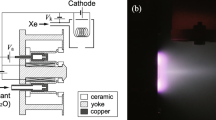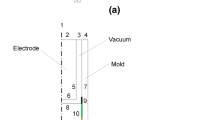Abstract
Dust could be generated due to the interaction between hot plasma and wall materials in the ITER vacuum vessel, in which hydrogen could be generated when induced by water or steam reacting with dust in some hypothesis accident scenarios, such as loss of coolant accident, wet bypass and loss of vacuum accident. Under such conditions air ingress may led to hydrogen explosion which could damage the integrity of ITER device and would cause the radioactivity releasing to the environment. Computational fluid dynamics method is proposed to study the distributions of the hydrogen, steam and air in the ITER devices and evaluate hydrogen risk control with inert gas injection and hydrogen removal with passive autocatalytic recombination. To verify the computational models to study hydrogen risk induced by wet bypass accident, STARDUST experiment is modeled and simulated, in which the calculated results compared with the experimental results show that RNG k-ε turbulence model can be used in the hydrogen distribution analysis. The calculated results of the hydrogen distribution show that there is hydrogen combustion or explosion risk under the accident conditions. Then the hydrogen mitigation measures is applied to the system, and the analytical result shows that inert gas injection at the early stage of the accident with a large rate could mitigate the hydrogen risk effectively, and that hydrogen recombiners play an important role to mitigate the hydrogen risk in suppression tank, which is helpful for the safety design.

















Similar content being viewed by others
References
J. Winter, Dust in fusion devices-experimental evidence, possible sources and consequences. Plasma Phys. Control. Fusion 40(6), 1201–1210 (1998)
J.P. Sharpe, D.A. Petti, H.W. Bartels, A review of dust in fusion devices: implications for safety and operational performance. Fusion Eng. Des. 63(64), 153–163 (2002)
ITER Technical Basis. ITER EDA Documentation Series No. 24,IAEA,Vienna,2002
V. Chuyanov, L. Topilski, Prevention of hydrogen and dust explosion in ITER. Fusion Eng. Des. 81(8–14), 1313–1319 (2006)
A. Denkevits, Hydrogen/dust explosion hazard in ITER: effect of nitrogen dilution on explosion behavior of hydrogen/tungsten dust/air mixtures. Fusion Eng. Des. 85(7), 1059–1063 (2010)
W.Gulden, et al., European contribution to the ITER licensing. 18th TOFE 8085, 2008
A.Bengaouer, Feasibility study of possible prevention of hydrogen explosion in ITER by injection of inert gas. CEA report SFME/LTMF/RT/08-022/A, 2008
C. Bellecci, P. Gaudio, I. Lupelli et al., STARDUST experimental campaign and numerical simulations: influence of obstacles and temperature on dust resuspension in a vacuum vessel under LOVA. Nucl. Fusion 51(5), 053017 (2011)
L.Topilski. Main parameters and assumptions that should be taken into account in the model of inert gas injection system for hydrogen explosion suppression. ANNEX 2 G 81 TD 29 FE, 2006
Acknowledgments
This work is supported by the National Magnetic Confinement Fusion Science Program of China (No. 2013GB114005, No. 2014GB122000) and the National Natural Science Foundation of China (No. 11375116).
Author information
Authors and Affiliations
Corresponding author
Rights and permissions
About this article
Cite this article
Tong, L., Hou, L. & Cao, X. Study on Hydrogen Risk Induced by Dust for Fusion Device. J Fusion Energ 34, 1–8 (2015). https://doi.org/10.1007/s10894-014-9752-z
Published:
Issue Date:
DOI: https://doi.org/10.1007/s10894-014-9752-z




